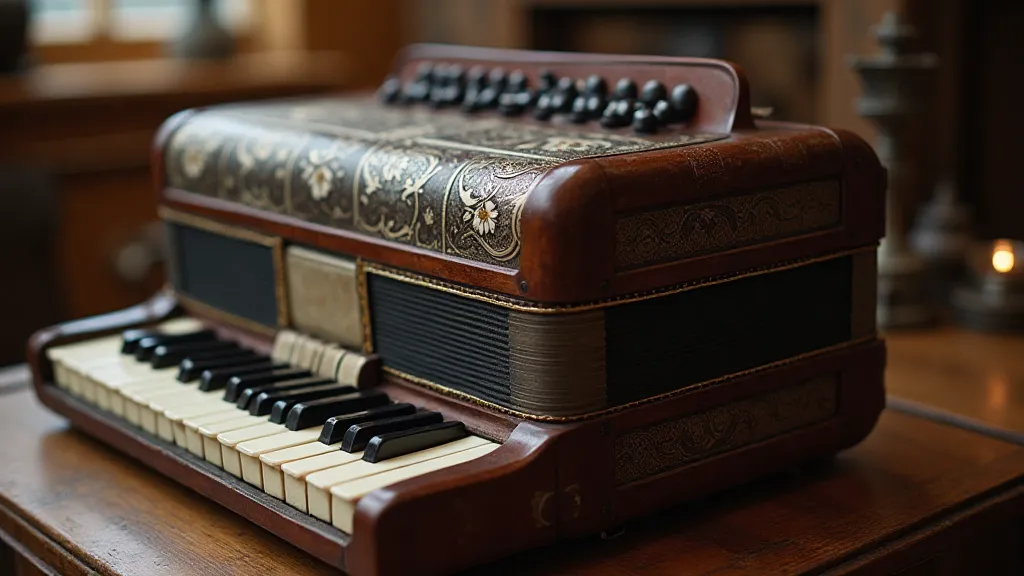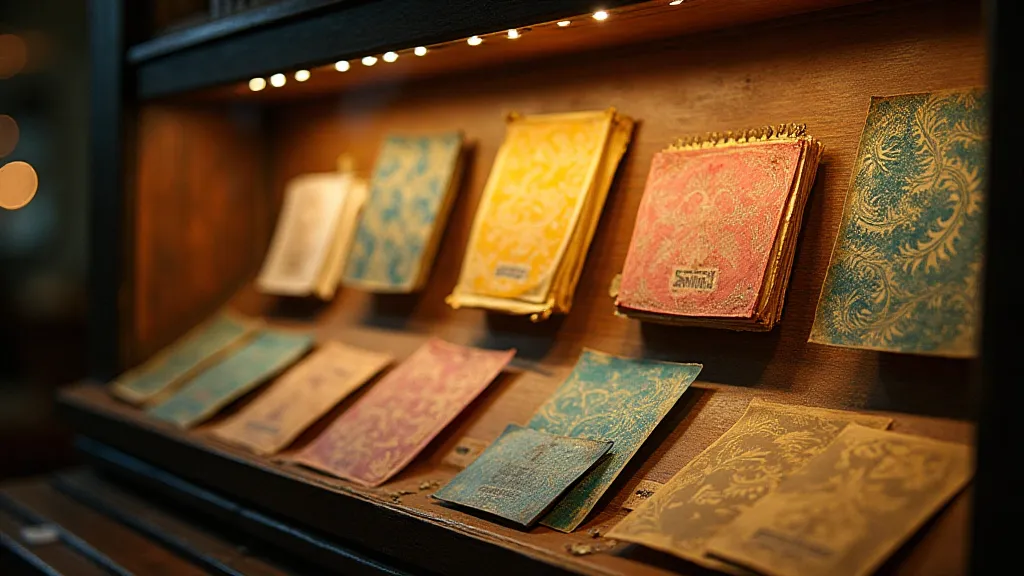The Ghost of a Pattern: Revisiting and Refining Your Work
There's a certain melancholic beauty in well-worn things, a silent testament to time’s passage and the hands that shaped them. I often think about this when I'm working with paper marbling. It’s not just about creating a vibrant, swirling design; it’s about honoring the history embedded within the process, accepting the unpredictable nature of the materials, and understanding that even "mistakes" can be treasures waiting to be discovered. This understanding resonated deeply when, years ago, I inherited my grandfather’s antique accordion.
It wasn't a pristine instrument. Decades of use had taken their toll. The bellows were cracked, the keys stuck, and the leather was brittle and faded. But I saw beyond the decay. I saw the echoes of laughter, the ghosts of melodies played in crowded halls and quiet homes. I felt the weight of generations connected through this single, beautiful object. Just as with paper marbling, I realized the true beauty lay not in achieving perfection, but in appreciating the story etched into its very being. The act of restoration, for both the accordion and the marbled paper, became a conversation with the past, a process of respectful understanding rather than ruthless reconstruction.

Paper marbling, in its essence, is about embracing controlled chaos. You’re working with floating pigments on a thickened water bath – carrageenan or methylcellulose are common – and the way they interact is inherently unpredictable. You don’t *make* a pattern; you *reveal* it. The initial attempts, the first few pulls of the paper, often don’t quite work. They may be too muddy, too sparse, or simply lack the visual “spark” you were hoping for. Many practitioners might discard these early efforts, seeking only the flawless result. But I’m increasingly drawn to revisiting them, reinterpreting them, finding the hidden potential within those imperfect first attempts. Think of it as a writer going back to a draft, not to obliterate what’s there, but to find the seed of a story that was waiting to be nurtured.
The “ghosts” I’m referring to aren't literal apparitions, of course. They're the subtle traces left by previous marbling attempts – faint ripples of color, uneven pigment distribution, the almost imperceptible texture left by the paper’s initial contact with the bath. These aren’s flaws to be erased; they are historical markers, evidence of the creative journey undertaken. They inform the next attempt, guiding your hand, shaping your decisions. Just as a skilled furniture restorer might choose to leave some signs of age visible, to preserve the object’s history, I’m learning to embrace these spectral patterns in my marbled paper.
The Language of the Bath
The thickness of the carrageenan bath, the type of pigment used, the speed and pressure of the paper pull – these are all elements that contribute to the final result. Each variable leaves a subtle imprint. The initial, less-than-perfect pulls become a record of these decisions. They offer insights into what worked and what didn’t. Perhaps the bath was too thick, resulting in a too-dense pattern. Or maybe the pigment was applied too sparingly. By observing these early attempts, you begin to develop a nuanced understanding of the materials, a “language” that allows you to anticipate and control the process more effectively. It’s an intuitive understanding, built not through rigid rules, but through patient observation and experimentation.
Consider antique paper itself. Early examples of marbled paper, dating back to the 16th century, often possess a certain fragility and a unique character that's difficult to replicate today. The paper fibers were different, the pigments were often derived from natural sources, and the techniques employed were passed down through generations of artisans. Reproducing those exact qualities is impossible, but understanding the context—the materials, the methods—can inform our own practice, leading to a deeper appreciation for the craft and inspiring new creative avenues. It’s a humbling experience, recognizing that you're part of a long lineage of artisans, each contributing to the evolution of the art form.
This reverence extends beyond the technical aspects. Paper marbling, like so many traditional crafts, has a deeply human element. It connects us to the past, reminding us of the skills and creativity of those who came before us. When I examine a piece of antique marbled paper, I don’t just see a decorative pattern; I see the hand of the artist, their intention, their struggles, and their triumphs. It's a connection that transcends time and culture.
Refining the Narrative
The act of revisiting and refining a marbled paper, much like editing a piece of writing, isn’t about erasing what’s already there; it’s about clarifying the narrative, strengthening the composition, and revealing the underlying beauty. Perhaps you’re drawn to a particular area of the initial attempt—a swirl of color, a subtle texture—and you decide to build upon it, adding new layers of pigment and manipulating the pattern to enhance its visual impact. Sometimes, a seemingly insignificant detail—a tiny speck of color—can become the focal point of the entire piece.

Think about a writer returning to a manuscript after a period of distance. The initial drafts might be clumsy or unfocused, but revisiting them with fresh eyes can reveal hidden gems—a poignant phrase, a compelling image, a promising plot thread. The writer doesn't discard the earlier drafts; they incorporate the best elements, refining the narrative, and shaping it into a cohesive whole. Similarly, with paper marbling, the earlier attempts aren't failures; they're stepping stones on the path to creating a truly remarkable piece of art.
Embracing the Unseen
Ultimately, the art of paper marbling, like any creative pursuit, is about embracing the unexpected, accepting imperfection, and honoring the history embedded within the process. It’s about learning to see the beauty in the “ghosts” of previous attempts, recognizing that these subtle traces are not flaws to be eradicated, but rather invaluable clues that guide us toward a deeper understanding of the craft. Just as my grandfather’s antique accordion held more than just musical history, each sheet of marbled paper tells a story—a silent testament to the creative journey, the passage of time, and the enduring power of human artistry. It's a conversation, a collaboration between the artist and the materials, a dance between intention and serendipity. The true masterpiece lies not just in the finished product, but in the appreciation of the entire process.






